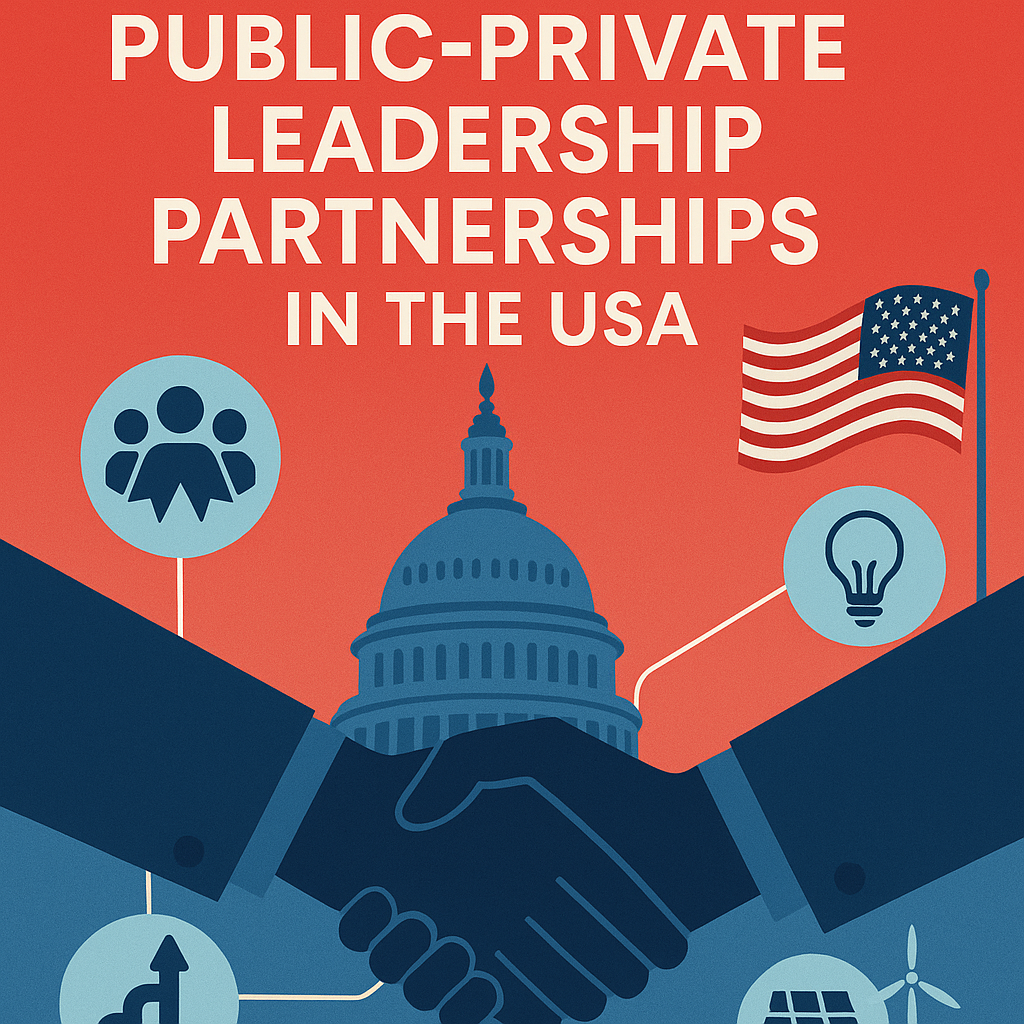The Future of Public-Private Leadership Partnerships in the USA: Driving America’s Next Transformation
Introduction: Why the U.S. Needs Leadership Partnerships Now
From rebuilding infrastructure to accelerating digital transformation and tackling climate change, the U.S. faces challenges that can’t be solved by government alone. Public-private leadership partnerships (PPLPs) — high-level collaborations between government, business, philanthropy, and civil society — are becoming the backbone of transformative change.
Unlike traditional contracting models, these partnerships emphasize shared leadership, joint accountability, and long-term strategic collaboration. In the American context, they’re proving vital for innovation, resilience, and competitiveness.
What Makes American Partnerships Unique
The U.S. has a long history of public-private collaboration — from railroads in the 19th century to space exploration with NASA and private aerospace firms. What’s new is the leadership-level integration, where CEOs, governors, mayors, philanthropists, and community leaders co-create strategy rather than simply fund projects.
This leadership dimension reflects America’s unique federalist system, where states and cities often lead experimentation. It also draws on the country’s culture of innovation and entrepreneurship, with the private sector driving rapid technological change.
Key Drivers in the U.S. Context
-
Infrastructure Modernization: The 2021 Bipartisan Infrastructure Law has opened new opportunities for public-private leadership collaborations in transport, energy, and broadband. (whitehouse.gov)
-
Health Innovation: COVID-19 demonstrated the power of partnerships like Operation Warp Speed, where the federal government collaborated with private pharmaceutical companies to accelerate vaccine development.
-
Climate & Energy Transition: U.S. states like California and Michigan are leveraging PPLPs to drive renewable energy adoption, electric vehicles, and sustainable housing.
-
Social Innovation & Equity: Philanthropy and business leaders are working with local governments to address inequality, homelessness, and criminal justice reform.
Case Studies from Across America
1. California’s Social Innovation Partnerships
California has pioneered cross-sector leadership platforms where state leaders, philanthropies, and businesses co-design programs for homelessness, healthcare access, and education reform. These partnerships move beyond short-term projects to create systemic, statewide impact. (oregonmetro.gov case study PDF)
2. Michigan’s Early Childhood Public-Private Partnerships
Michigan has developed leadership partnerships focused on early childhood services, bringing together state officials, local businesses, and philanthropies to expand access and affordability. This model highlights how leadership collaboration can strengthen human capital for long-term economic growth.
3. Operation Warp Speed (Federal Example)
One of the most impactful U.S. examples, Operation Warp Speed, combined federal funding, military logistics, private sector R&D, and regulatory alignment to deliver vaccines in record time. It shows the power of crisis-driven public-private leadership partnerships.
4. Infrastructure & Broadband Expansion
Public-private collaborations are key to expanding broadband access in rural America. Federal and state governments partner with telecom companies to deploy fiber networks, bridging the digital divide.
Why Public-Private Leadership Partnerships Work in the U.S.
-
Shared Risk & Resources: Leveraging public budgets, private investment, and philanthropic dollars.
-
Innovation at Scale: Companies bring speed and technical expertise, while governments provide regulatory power and legitimacy.
-
Inclusive Leadership: Community organizations and nonprofits ensure marginalized voices are included.
-
Resilience & Flexibility: Partnerships allow quicker pivots in crises, from pandemics to climate disasters.
Challenges & Pitfalls
-
Power imbalances, with private interests sometimes overshadowing public good.
-
Short political cycles disrupting long-term continuity.
-
Accountability gaps when responsibilities are spread across many players.
-
Risk of excluding smaller communities or minority-owned businesses from partnerships.
Recommendations for the Future of American Partnerships
-
Institutionalize cross-sector leadership councils at state and federal levels.
-
Strengthen blended finance mechanisms (impact bonds, infrastructure banks).
-
Expand legal frameworks that enable flexible procurement and contracting.
-
Invest in collaborative leadership training for public officials and business executives.
-
Ensure inclusivity by requiring community representation at decision-making levels.
-
Measure success with transparent metrics — not just dollars spent, but long-term social and economic impact.
Conclusion: America’s Next Frontier
The U.S. is at a crossroads. To remain competitive, resilient, and equitable, public-private leadership partnerships must become the rule, not the exception. By embedding collaboration into governance, America can unlock innovation, rebuild trust, and deliver transformation at scale.
As history shows — from the New Deal to the Space Race — America thrives when sectors lead together. The future of U.S. leadership partnerships is not just promising; it’s essential.
